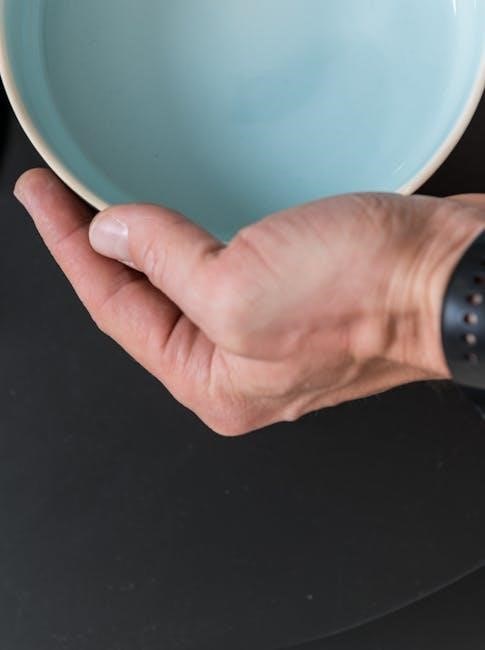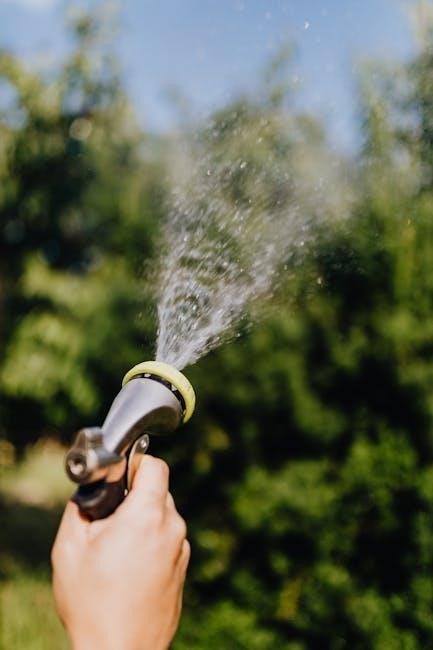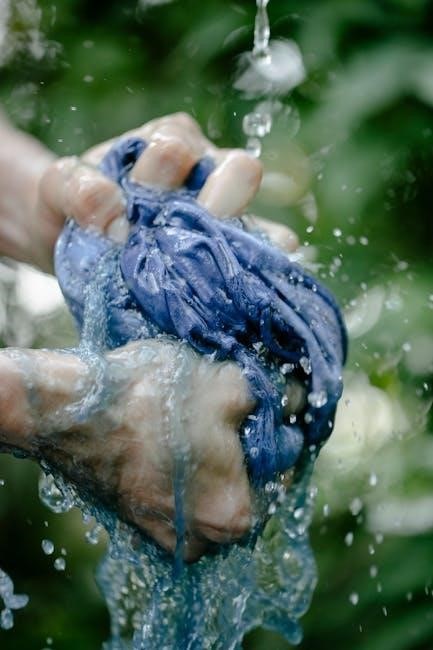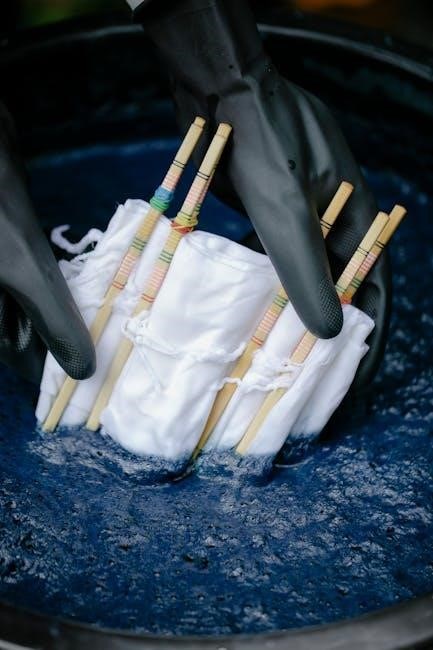Welcome to the Water Softener Instruction Manual! This guide provides essential information for installing, operating, and maintaining your water softener system effectively. It ensures optimal performance and longevity, covering key aspects of setup, daily operation, and troubleshooting for a hassle-free experience.
1.1 Purpose of the Manual
This manual is designed to guide users through the installation, operation, and maintenance of their water softener system. It provides detailed instructions to ensure optimal performance, longevity, and safety. The manual covers essential steps for setup, daily use, and troubleshooting, helping users achieve the best results from their water softener while adhering to safety guidelines and best practices.
1.2 Importance of Water Softeners
Water softeners are essential for removing minerals like calcium and magnesium that cause water hardness. They prevent scaling in pipes, protect appliances, and improve water flow. Softened water enhances skin health, reduces soap residue, and makes cleaning easier. By addressing hard water issues, softeners extend the lifespan of plumbing and household systems, ensuring better hygiene and efficiency in daily water usage.
1.3 Safety Precautions
Always turn off the water supply before installation and ensure the area is dry. Avoid exposing the softener to freezing temperatures. Keep electrical components away from water to prevent shocks. Handle salt and chemicals with care, avoiding ingestion. Follow all instructions carefully and consult a professional if unsure. Regular maintenance ensures safe and efficient operation of the system.

Installation Requirements
Ensure the unit is installed on a flat, stable surface, away from freezing temperatures. Keep the drain hose short and avoid submerging it in water. Follow local plumbing codes for a secure setup.
2.1 Location Considerations
Position the water softener on a flat, stable surface, ensuring easy access for maintenance. Avoid areas prone to freezing temperatures or moisture accumulation. Keep the unit away from direct sunlight and heat sources. Ensure the drain hose can reach the designated drain without kinking or submerging. Ideally, locate the softener near the water supply line to minimize plumbing complexity and ensure optimal water flow dynamics.
2.2 Drain Line Setup
Position the drain hose with a 1-1/2″ air gap to prevent backflow. Ensure the drain line is not submerged and flows freely into a suitable drain. Install a check valve to prevent sewer water from entering the system. Keep the drain line as short as possible to maintain proper flow. Avoid kinking or coiling the hose, as this can disrupt the softener’s regeneration process and overall efficiency.
2.3 Water Pressure Recommendations
Ensure the water pressure for your softener is between 30-100 psi for optimal performance. Exceeding this range may damage the system. The water temperature should be between 33-100°F (0.5-37.7°C) for proper function. Avoid extreme pressure fluctuations, as they can affect the softener’s efficiency and longevity. Always check local water conditions and adjust settings accordingly to maintain stable operation and prevent potential damage.

Step-by-Step Installation Guide
Follow these detailed steps to install your water softener: connect the water supply, set up the drain hose, and perform final system checks to ensure proper function.
3.1 Pre-Installation Checks
Before installing your water softener, ensure the location is flat and dry. Check for adequate water pressure (30-100 PSI) and suitable water temperature (33-100°F). Verify electrical requirements (115/120V, 60Hz) and ensure the drain hose is properly routed. Inspect for any signs of water damage or leaks. Ensure all necessary tools and components are available. Measure the space to accommodate the unit and its accessories. Check for potential water quality issues like chlorine or iron, which may require additional filtration. Ensure the salt tank is accessible for refilling. Review local plumbing codes and regulations. Confirm the bypass valve is in the correct position. Test the water hardness to set the softener appropriately. Ensure the drain line is correctly configured to prevent backflow. Familiarize yourself with the manual to avoid installation errors.
3.2 Connecting the Water Supply
Turn off the main water supply before connecting the softener. Ensure the water pressure is between 30-100 PSI for optimal performance. Locate the softener on a flat, dry surface, avoiding areas prone to freezing. Connect the inlet and outlet hoses securely to the softener and water supply lines. Refer to the manual for proper drain hose setup. Use a prefilter if sand, silt, or turbidity is present in the water supply. Ensure all connections are watertight to prevent leaks.
3.3 Setting Up the Drain Hose
Ensure the drain hose is securely connected to the softener’s drain port. Place the other end in a drain or standpipe, maintaining a 1-1/2″ air gap to prevent backflow. Avoid submerging the hose in water or sewage to prevent contamination. Keep the drain hose as short as possible and avoid kinking. Ensure proper drainage by directing the hose downward. Refer to the manual for specific installation requirements and safety guidelines.
3.4 Final Installation Checks
After completing the installation, perform a final inspection to ensure all connections are secure and properly sealed. Test water flow by opening a nearby faucet to check for leaks or irregularities. Verify the drain hose is correctly positioned and not submerged. Ensure the power supply is connected safely and the bypass valve is in the correct position. Double-check all settings and connections for optimal performance.

Operating Instructions
Follow the control panel instructions for daily operation, monitor water flow, and adjust settings as needed. Regularly check salt levels and system status for optimal performance.
4.1 Initial Setup and Programming
Begin by powering on the water softener and following the control panel prompts. Enter your water hardness level and preferred regeneration schedule. Set the clock and ensure all connections are secure. Initialize the system by running a manual regeneration cycle to clean and prepare the resin. Refer to the control panel guide for specific programming instructions tailored to your model.
4.2 Daily Operation and Monitoring
Daily operation involves monitoring the salt level, ensuring it never drops below the recommended minimum. Check the water hardness periodically to confirm optimal softening. Inspect the drain hose for proper placement and ensure no kinking. Regularly review the control panel for error codes or alerts. Maintain the brine tank level and ensure the system cycles correctly. Address any issues promptly to maintain efficiency and water quality.
4.3 Understanding the Control Panel
The control panel is the central interface for managing your water softener. It displays current settings, water usage, and error codes. Use the navigation buttons to cycle through options like hardness levels, regeneration timing, and volume settings. The display shows remaining water capacity or time until the next regeneration. Familiarize yourself with the panel to monitor performance, adjust settings, and address alerts promptly for optimal system function.

Maintenance and Cleaning
Regular maintenance ensures optimal performance. Check salt levels monthly, clean the brine tank periodically, and inspect for blockages. This prevents issues like salt bridging and ensures efficiency.
5.1 Salt Recommendations
For optimal performance, use high-quality block salt or solar salt. Block salt is cost-effective and minimizes impurities, while solar salt dissolves easily, preventing bridging. Avoid using rock salt to maintain efficiency and avoid caking issues. Regularly check salt levels to ensure consistent water softening and system longevity.
5.2 Cleaning the Brine Tank
Regularly clean the brine tank to ensure optimal salt flow and system efficiency. Remove old salt, rinse thoroughly, and refill with recommended salt types. Avoid contamination by keeping the tank sealed. Check for salt bridging and break it up if necessary. Maintain proper water levels to prevent damage. Cleaning ensures consistent regeneration and effective water softening performance over time.
5.3 Regular System Checks
Perform regular system checks to ensure your water softener operates efficiently. Check water hardness levels to confirm softening effectiveness. Inspect the salt level in the brine tank and refill as needed. Monitor for salt bridging or blockages. Ensure the drain hose is free from kinks or obstructions. Look for signs of leaks or wear on valves and hoses. Regular checks help prevent issues and maintain optimal system performance over time.

Troubleshooting Common Issues
Identify and resolve common issues like low water pressure, salt bridging, or error codes. Refer to the troubleshooting guide for step-by-step solutions to ensure system efficiency and optimal performance.
6.1 Identify and Resolve Errors
Check for error codes or unusual behavior, such as low water pressure or excessive noise. Common issues include salt bridging, faulty valves, or display malfunctions. Restart the system or clean components as needed. Refer to the troubleshooting guide for detailed solutions. If problems persist, consult the manual or contact customer support for professional assistance. Regular system checks can prevent recurring issues.
6.2 Resetting the System
To reset your water softener, first ensure it is powered off. Locate the reset button, usually found on the control panel or behind a protective cover. Press and hold the reset button for 10-15 seconds until the display indicates a reset. Turn the power back on and allow the system to complete its initialization cycle. If issues persist, refer to the manual or contact a technician for assistance. Regular resets can help maintain optimal performance.
6.3 When to Call a Professional
If you encounter persistent issues or complex malfunctions, such as electrical problems or system damage, it is advisable to contact a certified technician. DIY repairs can void warranties or cause safety hazards. Professionals can diagnose and resolve advanced issues, ensuring your water softener operates safely and efficiently. Always consult the manual or manufacturer for recommended service providers.

Programming Instructions
This section provides a guide for initial setup, including clock settings and adjusting softening levels to customize your water softener’s operation for optimal performance.
7.1 Setting the Clock
Setting the clock is essential for proper system operation. Press and hold the program button for 5 seconds to enter setup mode. Use the arrow keys to adjust the time, ensuring it matches your local time in 24-hour format. Save your settings to complete the process. The clock ensures timely regeneration cycles, maintaining optimal water softening performance. Accurate time setup is crucial for efficient system functionality.
7.2 Adjusting Softening Settings
Adjusting softening settings ensures your water softener operates efficiently based on your water hardness. Press the settings button to access the menu. Use the arrow keys to increase or decrease the softening level. Save your preferences to optimize water quality. Regularly test and adjust settings to maintain desired water softness, ensuring the system adapts to any changes in water conditions for consistent performance.
7.4 Commissioning the Softener
To commission the softener, ensure all connections are secure and the system is powered on. Open the main water valve slowly to allow water flow. Check for leaks and run a diagnostic cycle to verify proper function. Initialize the softening process by pressing the start button. Allow the system to complete its first regeneration cycle to ensure it is ready for use and operating efficiently.

Safety Guidelines
Always follow safety precautions when installing or maintaining your water softener. Ensure electrical connections are secure and avoid exposing the system to freezing temperatures. Keep children away from chemical handling areas and refer to the manual for proper safety measures to prevent accidents and ensure safe operation of the unit.
8.1 Electrical Safety
Ensure all electrical connections are secure and meet local safety standards. Keep the area around the water softener dry to prevent electrical shocks. Avoid overloading circuits, and use a GFCI-protected outlet if necessary. Never submerge electrical components in water or expose them to moisture. Always disconnect the power supply before performing maintenance or repairs. Consult a licensed electrician if you are unsure about any electrical connections or requirements.
8.2 Water Safety
Ensure the water supply is clean and free from contaminants before connecting to the softener. Regularly inspect pipes and connections for leaks to prevent water damage or contamination. Always flush the system thoroughly after installation or maintenance to remove any debris. Monitor water hardness levels to ensure optimal softening performance. Follow local water safety guidelines for safe drinking water standards.
8.3 Handling Chemicals
When handling chemicals for your water softener, wear protective gloves and eyewear. Use high-purity salt or recommended alternatives to prevent contamination. Avoid mixing different chemical types, as this can cause reactions. Store chemicals in a dry, cool place away from children. Follow the manufacturer’s instructions for salt dosage and refilling to ensure safety and system efficiency. Dispose of any waste according to local regulations.

Water Quality Improvement
Softened water reduces hardness, preventing scaling and improving appliance efficiency. It enhances clothing texture, skin health, and hair quality. Regular monitoring ensures optimal water quality and performance.
9.1 Understanding Water Hardness
Water hardness refers to the concentration of calcium and magnesium ions in water. High levels cause scaling in pipes and appliances, reducing efficiency. Softeners remove these minerals, preventing damage and improving water quality. Hard water can also leave residue on surfaces and affect cleaning. Measuring hardness helps determine the optimal softening settings for your system.
9.2 Benefits of Softened Water
Softened water reduces scaling in pipes and appliances, extending their lifespan. It improves cleaning efficiency, preventing soap scum buildup and spotting on surfaces. Soft water is gentler on skin and hair, reducing irritation and enhancing hygiene. Additionally, it boosts the efficiency of water heaters and other household systems, saving energy and maintenance costs over time.
9.3 Measuring Water Quality
Regularly testing water hardness, total dissolved solids (TDS), and pH levels ensures optimal softener performance. Use a water test kit to measure hardness in grains per gallon (gpg) and verify TDS levels. Proper pH balance prevents corrosion and scaling. Routine testing helps maintain system efficiency and confirms the effectiveness of your water softener in improving water quality for household use.

Salt and Maintenance Recommendations
Welcome to the Salt and Maintenance Recommendations section. This guide provides essential tips for using the right salt types, refilling procedures, and regular system checks to ensure optimal performance and longevity.
10.1 Types of Salt to Use
For optimal performance, use high-quality salt designed for water softeners. Block salt is ideal due to its low impurities and resistance to caking. Solar salt, derived from seawater, is another excellent option. Avoid rock salt, as it contains impurities that can cause bridging. Regularly check salt levels and refill as needed to ensure consistent water softening efficiency and system longevity.
10.2 Refilling Salt
To refill salt, turn off the water supply and open the brine tank. Remove the cover and inspect the current salt level. Add salt until it reaches the recommended level, ensuring even distribution. Avoid overfilling to prevent spillage. The system will automatically dissolve the salt during regeneration. Regular refills maintain optimal water softening performance and prevent salt bridging issues.
10.3 Preventing Salt Bridging
To prevent salt bridging, use high-quality salt and avoid overfilling the brine tank. Ensure the salt level is below the recommended maximum to allow proper airflow. Regularly inspect the tank for signs of bridging, such as a hard crust forming. If bridging occurs, carefully break up the crust with a sturdy tool or rinse the tank. This maintenance ensures consistent salt dissolution and optimal system performance.
Warranty and Support Information
Welcome to the warranty and support section. This manual outlines the warranty coverage for your water softener, details on contacting customer support, and locating authorized service centers for assistance.
11.1 Warranty Coverage
Your water softener is backed by a comprehensive warranty covering parts and labor for up to 5 years. This coverage applies when the system is installed correctly and used as intended. The warranty does not apply to damages resulting from misuse or improper installation. Ensure your system is registered within 30 days of installation to validate the warranty. Coverage extends to all original components but excludes issues arising from neglect or unauthorized modifications.
11.2 Contacting Customer Support
For assistance, contact our customer support team via phone at 1-800-softwater or email at support@watersoftener.com. Our team is available Monday-Friday, 8 AM to 5 PM EST. Visit our website for live chat options or to submit a support ticket. We provide troubleshooting, maintenance advice, and warranty-related inquiries to ensure your water softener operates efficiently. Our dedicated specialists are here to address your needs promptly and professionally.
11.3 Finding Service Centers
To locate authorized service centers, visit the manufacturer’s website or contact customer support. Regional service centers are listed online, ensuring convenient access for maintenance and repairs. For specific inquiries, call Master Water Conditioning at 610.323.8358 or visit their office at 224 Shoemaker Rd, Pottstown, PA 19464. Provide your system’s model number and location for prompt assistance.
